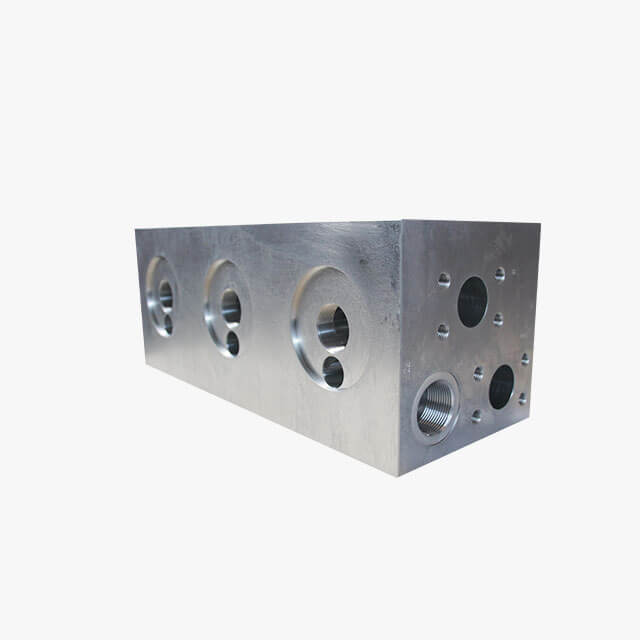The basic structure of Wuxi hydraulic valve block mainly includes valve core, valve body and control device which drives the valve core to move relatively in the valve body. The main forms of valve core are slide valve, cone valve and ball valve; In addition to the valve body hole or valve seat hole matched with the valve core, the valve body also has the oil inlet, oil outlet and oil drain of the external oil pipe; The device that drives the valve core to do relative movement in the valve body can be a manual adjusting mechanism, a spring or an electromagnet, and in some cases, it is driven by hydraulic pressure.
In the working principle, the hydraulic valve uses the relative movement of the valve core in the valve body to control the on-off of the valve port and the size of the opening, so as to realize the control of pressure, flow and direction. When the hydraulic valve works, the relationship among the size of the valve port, the pressure difference between the inlet and outlet of the valve and the flow through the valve conforms to the orifice flow formula (q = KA)· Δ P m), but the parameters of valve control are different.
According to the structure and application, the hydraulic valve block can be divided into strip block, small plate, cover plate, splint, valve mounting base plate, pump valve block, logic valve block, Superposition valve block, valve block, manifold and connecting block, etc. The hydraulic valve block in the actual system is composed of the valve block and the hydraulic valve, pipe joint, accessories and other components installed on it.
The hydraulic valve block is the key component of the integrated hydraulic system. It is not only the carrier of other hydraulic components, but also the channel body of their oil circuit. The valve block generally adopts cuboid shape, and the material is generally aluminum or malleable cast iron. There are installation holes, oil holes, connecting screw holes, locating pin holes, common oil holes and connecting holes on the valve block. In order to connect the holes correctly without interference, process holes are sometimes set.
Generally, there are 40-60 holes in a relatively simple valve block, and there are hundreds of more complex holes, which form a crisscross network of holes. There are many kinds of holes on the valve block, such as smooth hole, stepped hole, threaded hole and so on. Generally, they are straight holes, which are easy to be processed on ordinary drilling machines and CNC machine tools. Sometimes inclined holes are set for communication, but they are rarely used.
